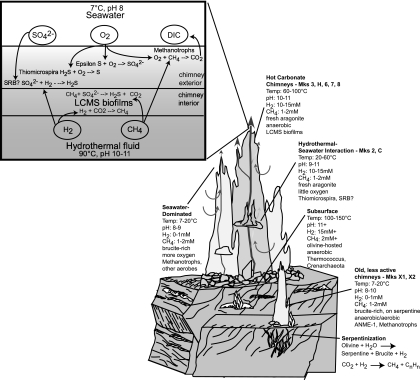FIG. 7.
Model of biogeochemical zonation at the Lost City hydrothermal field. Exothermic reactions in the serpentinization reaction zone produce H2, methane, and other hydrocarbons to drive the ecosystem. Hyperthermophilic Thermococcales and Crenarchaeota inhabit the subsurface where both temperature and pH could be very high. LCMS biofilms, consuming the abundant H2 and/or methane present in hydrothermal fluids, coat the surface of fresh aragonite precipitated at actively venting carbonate chimneys. Electron acceptors are introduced via seawater circulating through the highly porous chimney structures, allowing aerobic sulfide oxidizers and methylotrophs to inhabit the exterior portions of the chimneys. As chimneys age and cool down, they vent less H2-dominated hydrothermal fluid but retain enough methane to support anaerobic methanotrophic Archaea (ANME-1), which replace LCMS as the dominant phylotype.

